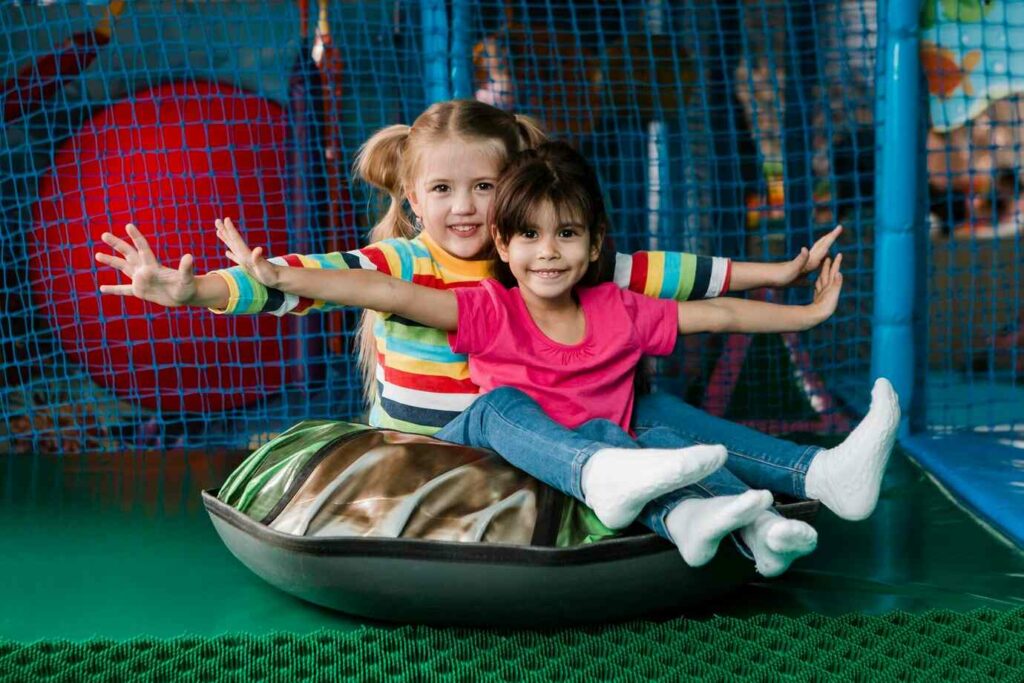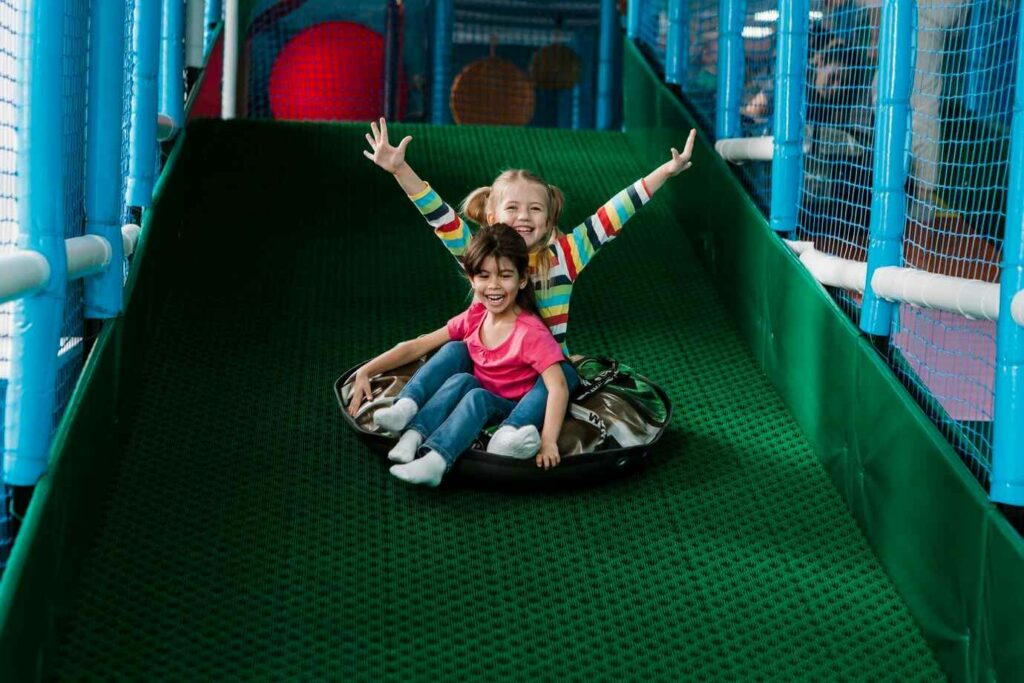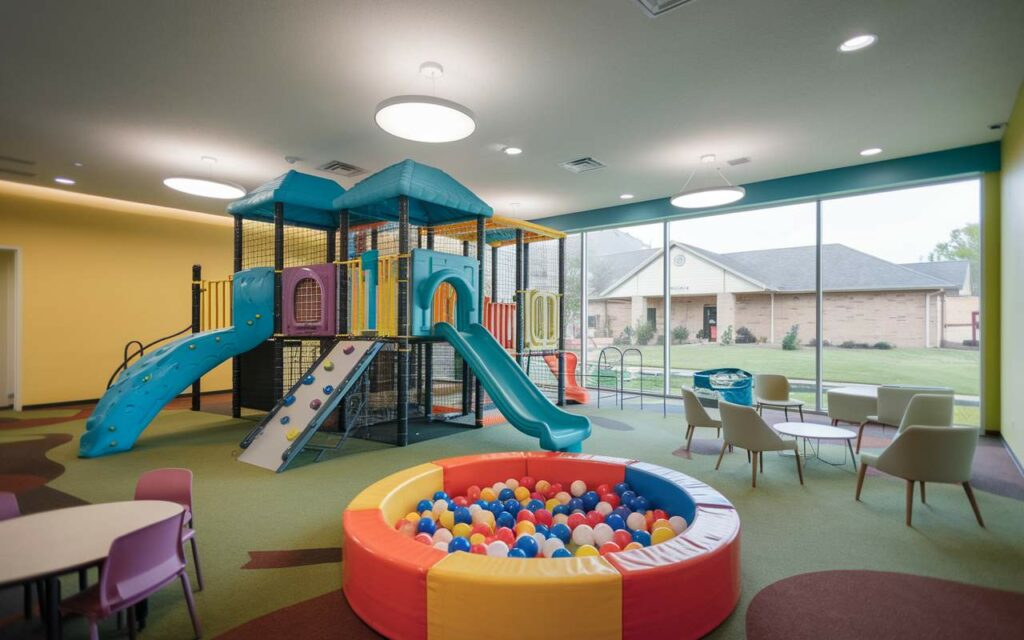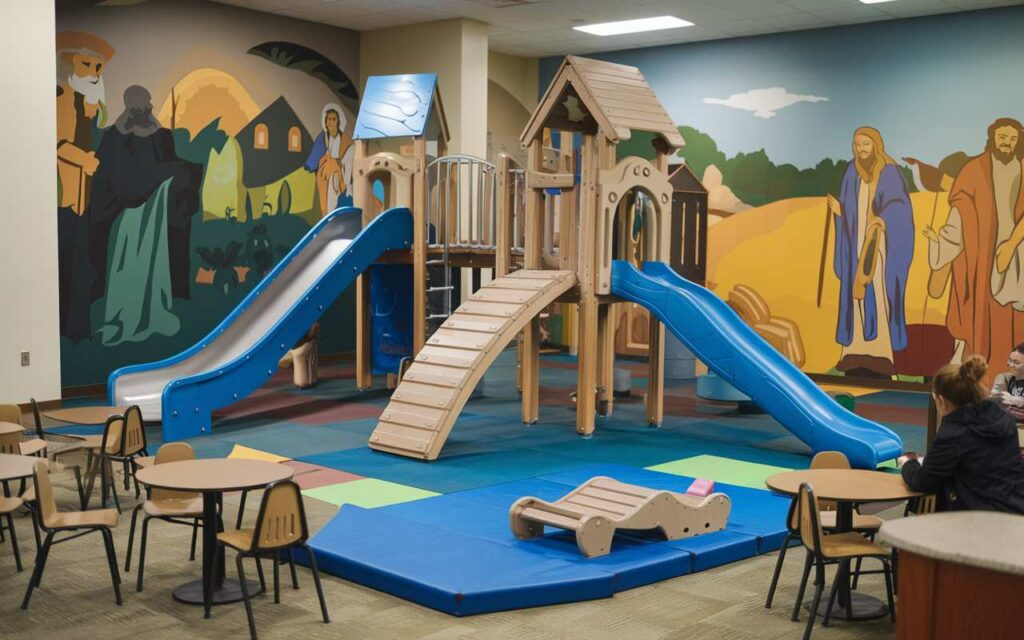On a typical Saturday afternoon, parents often seek engaging activities for their children, hoping to channel their energy in a safe and fun environment. Indoor playgrounds have become popular destinations for families, providing a vibrant space where kids can play freely. As the demand for these facilities grows, a common question arises: how much money do indoor playgrounds make? Understanding the financial potential of this business is crucial for aspiring entrepreneurs looking to capitalize on this thriving market.

¿Cuánto dinero ganan los parques infantiles interiores?? Data Analysis
Indoor playgrounds can be highly profitable ventures when managed effectively, with average annual revenues ranging between $500,000 y $1 millón. Por ejemplo, a report from IBISWorld states that the indoor entertainment industry, which includes playgrounds, has grown by 3.9% annually over the past five years, reflecting strong demand. Start-up costs, which typically range from $200,000 a $500,000, cover essentials like equipment, leasing, and renovations. The average profit margin in this industry is between 15% y 30%, depending on location, operational efficiency, and offerings. These figures answer the common question, are indoor playgrounds profitable, demonstrating the earning potential for those who can optimize their space and services.
Data also shows that adding services like private events, parties, and food and beverage sales can significantly boost revenue, with some playgrounds earning up to 50% of their total income from such offerings. As a result, strategic diversification in revenue streams plays a key role in maximizing profitability. Now let’s explore them in detail.
What Affects the Indoor Playground Profit?

Understanding how profitable are indoor playgrounds requires examining the key factors that influence their earnings. Several elements play a critical role in shaping the financial success of an indoor playground, from its location and size to operational costs and pricing strategies. Each aspect directly impacts revenue and profit margins, offering opportunities for growth or limitations depending on how they are managed.
Ubicación
Indoor playgrounds located in high-traffic areas such as malls or near schools tend to see significantly higher foot traffic. In urban environments, where families seek safe, accessible spaces for children, prime locations can boost daily attendance by 30% or more. Sin embargo, premium locations often come with higher rental costs, requiring operators to balance the benefits of increased visibility with the expenses involved.
Tamaño
The size of the facility affects both capacity and revenue potential. Larger playgrounds accommodate more children and can offer a broader range of activities, leading to increased admissions. A 10,000-square-foot playground, for instance, may host up to 200 children at once, allowing for a steady flow of customers, especially during peak hours. Sin embargo, with larger spaces come higher maintenance costs and staffing needs, which can impact overall profitability.
Design
A well-thought-out design enhances the customer experience and encourages repeat visits. Playgrounds that include diverse zones for different age groups tend to retain families longer, increasing spending on entry fees, alimento, and other services. Play areas that incorporate engaging, safe designs can also command higher prices for events and parties, making the playground more competitive and attractive.
Equipment Quality and Variety
The quality and variety of play equipment directly affect a playground’s appeal. Equipment from a reliable indoor playground manufacturer in China can offer a cost-effective solution without compromising on durability or safety. Facilities with versatile play structures tend to attract more children and allow for higher admission fees. Poor-quality equipment, on the other hand, can lead to frequent repairs and customer dissatisfaction, negatively impacting profit.
Marketing and Promotions
Effective marketing campaigns can increase visibility and customer engagement. A playground that invests in social media advertising, partnerships with local schools, or community events typically sees higher attendance. Offering promotional discounts during off-peak seasons or themed events can also drive traffic, improving revenue during slower periods. Data shows that well-targeted promotions can boost visitor numbers by as much as 20%.
Competition
In areas with multiple indoor playgrounds, competition can directly affect profits. Differentiating a playground through unique services, exceptional customer care, or exclusive event offerings helps build a loyal customer base. In highly competitive regions, the success of a playground often hinges on its ability to stand out in the market and offer something beyond the typical experience.
Seasonal Demand
Playgrounds often experience fluctuating demand based on seasonal factors. During winter months, school breaks, or rainy weather, attendance can surge, increasing daily profits significantly. Conversely, summer months or outdoor events may cause dips in traffic. Offering indoor camps or seasonal memberships helps stabilize revenue year-round, ensuring profitability even during off-peak times.
Business Model
The structure of an indoor playground business plan plays a critical role in determining profitability. Whether the playground operates as a standalone facility or integrates other services like daycare or party rentals, the business model impacts revenue streams and operational costs. Flexible models that allow for varied services tend to be more profitable, as they cater to a broader customer base.
Rent and Operational Costs
Rent is often one of the most significant expenses for indoor playgrounds. High rent prices can reduce profit margins, particularly in desirable locations. Además, operational costs such as utilities, staffing, and insurance must be carefully managed to avoid eating into profits. Efficient management of these expenses is crucial to maintaining profitability, especially in the early years of operation.
Entry Fees and Pricing Strategy
A well-calibrated pricing strategy directly impacts revenue. Playgrounds with flexible entry fee structures, offering tiered pricing based on age or group size, can attract a broader audience. Special packages for frequent visitors, family discounts, or memberships ensure regular patronage. Pricing must strike a balance between affordability for customers and profitability for the business, ensuring that both customer satisfaction and revenue targets are met.
10 Profitable Revenue Streams

To maximize indoor playground revenue, business owners can tap into a variety of income sources beyond regular admissions. Diversifying these streams allows playgrounds to capitalize on customer needs while maintaining a steady cash flow throughout the year. Here are ten key revenue streams that have proven successful in generating profit for indoor playgrounds.
Open Play
Open play sessions often form the core of playground revenue. Charging between $10 y $20 per child, a busy facility can host up to 200 children on a peak day. With open play offered multiple days a week, playgrounds can generate anywhere from $3,000 a $6,000 daily, adding significant revenue over time.
Admission Fees
Standard admission fees for walk-ins and group entries can bring substantial income. Charging $10 a $25 per visit, playgrounds with steady foot traffic see predictable earnings. A facility with 500 visitors a week can generate between $5,000 y $12,500 in weekly admissions alone, translating to up to $50,000 por mes.
Additional Services (Parties, Events)
Private events like birthday parties and corporate rentals are among the most lucrative streams, often accounting for up to half of a playground’s revenue. Party packages can range from $200 a $500 per event. A playground hosting 10 events per week could generate $2,000 a $5,000 weekly, adding up to an impressive $100,000 a $250,000 anualmente.
Merchandise Sales
Branded merchandise, such as toys, t-shirts, and accessories, offers a high-margin revenue stream. Selling items for $5 a $25, playgrounds can expect 15% of their total revenue to come from merchandise. A facility with strong sales might see $3,000 a $5,000 por mes, especially if merchandise is marketed well during events and parties.
Food and Beverage Sales
On-site cafés or snack bars provide a steady income, with families typically spending an additional $10 a $20 per visit. If 60% of visitors purchase food or beverages, a playground with 500 weekly visitors could earn an extra $3,000 a $6,000 per week. Over a year, food and beverage sales can easily contribute $150,000 a $300,000 to overall revenue.
Drop-in Care
Drop-in care is a valuable service, typically charging parents $15 a $25 per hour for supervised play. Facilities offering this service can cater to parents who need flexible, short-term childcare during errands or work. A playground with consistent weekday traffic could generate $1,500 a $3,000 weekly from this service alone, adding $75,000 a $150,000 in annual income.
Classes and Workshops
Educational and recreational classes, such as art or dance, are popular with parents and provide steady income. Charging $15 a $50 per class, a playground that runs 10 weekly classes with 15 participants per session could bring in $2,250 a $7,500 weekly. Over time, this could mean an additional $100,000 a $350,000 anualmente, depending on class offerings and attendance.
Arcade Games
Coin-operated arcade games provide passive income, with each game costing $0.50 a $1.50 per play. A playground with a small arcade section might bring in $500 a $2,000 weekly, depending on the number of games and visitors. Annually, arcade games can generate anywhere from $25,000 a $100,000, adding significant value to the overall business model.
Parent Memberships
Membership programs are an excellent way to secure recurring income. Charging between $50 y $100 per month for unlimited access, a playground with 200 members could generate $10,000 a $20,000 monthly. Over a year, memberships alone could contribute $120,000 a $240,000 in revenue, while also building customer loyalty.
Sponsorship and Advertising
Sponsorship and advertising partnerships with local businesses offer a less explored, yet highly profitable revenue stream. Offering advertising space on-site or through digital channels can bring in anywhere from $500 a $5,000 monthly, depending on the scale and visibility of the campaigns. Annually, these partnerships can add $6,000 a $60,000 to a playground’s earnings, all with minimal effort required.
Conclusión
In summary, indoor playgrounds offer a diverse array of revenue streams, making them a potentially lucrative venture for business owners. By carefully considering factors such as location, diseño, and customer engagement strategies, operators can significantly enhance profitability. As interest in indoor play continues to rise, exploring how much money do indoor playgrounds make is essential for anyone contemplating this rewarding business opportunity. Embrace the challenge and consider the possibilities in this flourishing industry.













